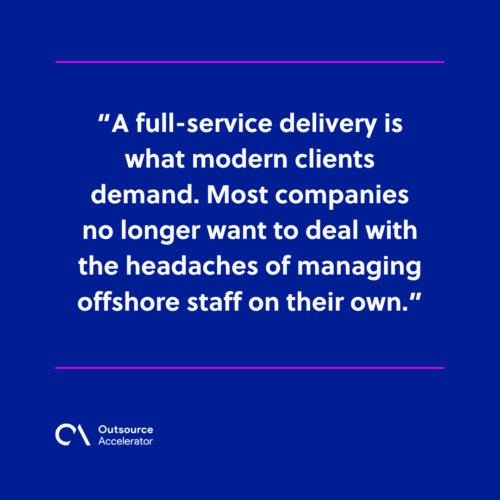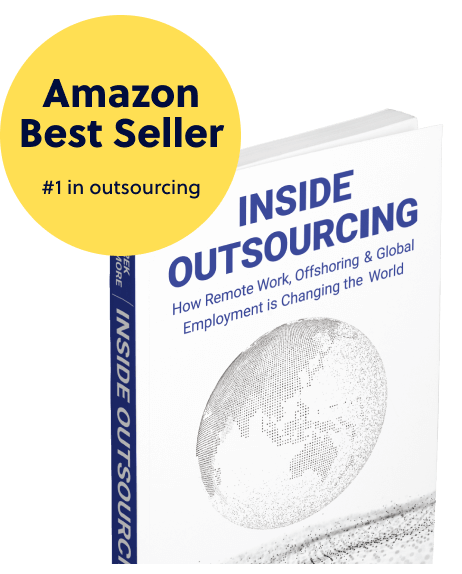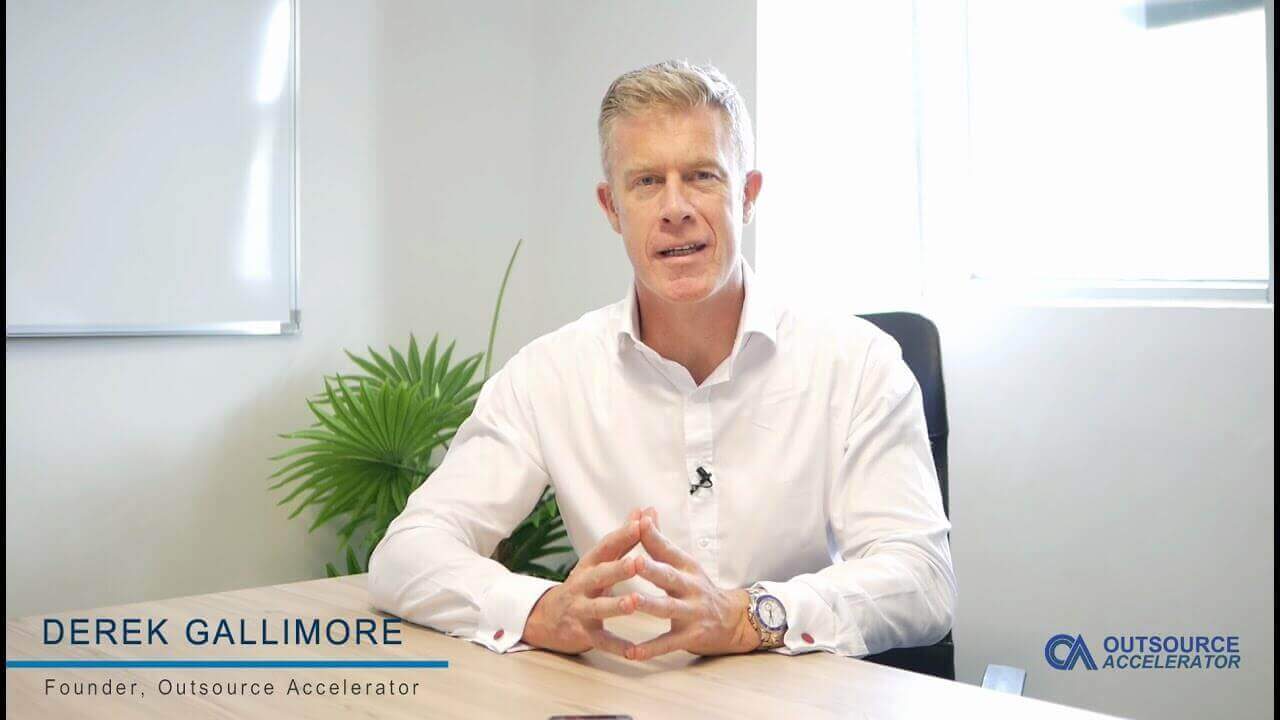Why process-driven outsourcing is the new standard in offshore excellence

Let’s be blunt: if your BPO’s main selling point is just saving a dime, you’re living in yesterday’s market. Talent is now globally accessible, and pricing models are flatlining.
Outsourcing has become a crowded, commoditized space—freelancers, gig platforms, and boutique agencies flood the market, each promising high performance at a fraction of the price.
So how does a BPO stand out? The answer is execution.
Process-driven outsourcing is fast becoming the new standard in offshore excellence. It’s not just about filling roles—it’s about delivering structured, outcome-focused solutions that generate real business value.
As Ike Stranathan, CEO of STAFFVIRTUAL, puts it in the 549th episode of the Outsource Accelerator Podcast: “You don’t rise to the level of your goals. You fall to the level of your systems and processes.”
Today, those systems and processes are what separate the amateurs from the elite.
What does it mean to be process-driven?
Process-driven outsourcing isn’t about micromanagement or rigid checklists. It’s about building scalable systems that guarantee consistency, quality, and accountability.
A process-driven BPO is one that manages not only the people but also the outcomes. It’s a firm that integrates workflows, tools, and expectations to ensure that clients see results—not just effort.
STAFFVIRTUAL exemplifies this approach by offering two delivery models: a basic cost-plus staffing option and a more popular, full-service turnkey model.
“We’re gonna find these people, we’re gonna manage them,” Ike explains. “We’re gonna provide an end-to-end solution and manage the outcomes and the KPIs for them.”
This full-service delivery is what modern clients demand. Most companies no longer want to deal with the headaches of managing offshore staff on their own.
They want a trusted partner who can design the process, manage the team, and deliver results, all without the client getting lost in the operational weeds.

Benefits of a process-focused outsourcing strategy
The rise of process-driven outsourcing is not just about sophistication, but about solving real business pain points. For clients, process equals performance.
Here’s why the model works:
1. Better reliability and accountability
A strong process ensures your team shows up—literally and figuratively.
“We had something like a 97.4% show rate with our team,” Ike shares. “Good luck finding people on your own and having that type of show rate, especially if you’ve never outsourced before.”
That reliability stems from systems, not just good luck. Structured onboarding, performance metrics, and role clarity lead to higher productivity and reduced turnover.
2. Consistent, high-quality delivery
When BPOs document and refine their workflows, clients experience fewer errors, faster ramp-up times, and more predictable results.
For example, in STAFFVIRTUAL’s work with a U.S. disability law firm, they helped the client scale from 2,000 to 10,000 cases per year. “We helped drive errors out of the process and put the process online and the SOPs and everything,” Ike says.
The firm streamlined tasks such as legal intake, document collection, and case assembly through this structured approach. Licensed legal professionals were not required to do the heavy lifting.
3. Easier onboarding for first-time clients
Many companies are outsourcing for the first time. They’re unfamiliar with remote management, unclear on workflows, and unsure what success should even look like. That’s where process-driven providers shine.
“We have some clients [say] that this is their first time, and they need us to be there for them and hold their hand every step of the way,” Ike notes.
When a BPO has clear, repeatable systems, it gives clients confidence that they’re in good hands, even if they’re new to global hiring.
4. Clear differentiation in a crowded market
Outsourcing is in a much stronger place than it was in the early aughts. The industry is expected to increase to USD 342.62 billion in 2025, and is set to hit 667.97 billion by 2033.
With thousands of providers offering similar price points and services, process becomes the real differentiator. As Ike puts it: “All you really care about is the process. That’s where you’re gonna win the value.”
Outsourcing is no longer just about bodies in seats. It’s about who can execute the best, at scale, and with minimal friction.
5. Scalability without sacrificing quality
Perhaps one of the most powerful advantages of a process-first approach is its ability to scale operations without losing quality.
As businesses grow, the challenge isn’t just hiring more people—it’s ensuring those people work in sync. Clear processes create a framework that allows new hires to plug in and perform quickly.
This was evident in STAFFVIRTUAL’s legal outsourcing success, where structured workflows enabled the firm to jump from thousands to tens of thousands of cases without chaos.
“It was a beautiful process,” Ike explains, referring to how they built a Henry Ford-style workflow with specialized teams handling different case stages. That kind of scale simply isn’t possible without process.
Implementing a process-driven model in your BPO
If process is the new gold standard, how can BPOs rise to meet it? It’s not as simple as writing an SOP document and calling it a day.
True process-driven outsourcing requires cultural commitment, operational discipline, and client-focused agility. Here are a few essential pillars:
Internal alignment around execution
The first step is internal buy-in. Leadership must view processes not as red tape but as core value drivers.
At STAFFVIRTUAL, this mindset starts at the top. Ike himself is laser-focused on improving operations: “Improving that process has been like a relentless pursuit of mine as CEO of the company,” he says.

Systematized onboarding and training
The client experience begins with onboarding. Process-driven BPOs have a step-by-step framework that makes the transition smooth—from initial consultation to full team deployment.
Whether the client has existing SOPs or needs help building them from scratch, the BPO should own the knowledge transfer process.
“We can help them build those materials from scratch,” says Ike. “It’s very likely we’ve already done it and… we’re doing it well for another client already.”
Flexible frameworks, not rigid templates
Process doesn’t mean forcing every client into the same mold. Successful BPOs know how to balance structure with flexibility, adjusting to different management styles and industries.
Ike acknowledges this variation: “Some people want a lot of organization, a lot of structure… Some people are more freewheeling.”
Process-driven providers aren’t dogmatic—they’re adaptable. They recognize patterns but customize execution based on the client’s unique needs and culture.
White-glove support and metrics
Elite BPOs back up their systems with exceptional service and transparent data. Metrics like attendance rates, productivity, and client satisfaction are baked into the model.
The goal isn’t just to deliver work—it’s to deliver peace of mind.
“It’s like you could do your taxes every year… or you could just hire your accountant that you use every year and you just forget about it,” Ike explains. “That’s how a BPO provider is.”
Continuous process optimization
Processes shouldn’t be static—they should evolve. A process-driven BPO regularly audits and refines its workflows to adapt to changing client needs, industry standards, and emerging technologies.
This mindset of continuous improvement is what keeps a provider sharp, relevant, and highly competitive.
“We want to kind of look at [our clients]… are they doing something that could be taken away in the near term?” Ike says, referencing the need to adapt amid AI and automation trends.
Forward-thinking BPOs aren’t just delivering—they’re anticipating. And that means processes must be dynamic, not fixed.
In the world of offshore outsourcing, cost is no longer king. Execution is. And the BPOs that commit to systematizing excellence—while staying agile to client needs—are the ones shaping the future of the industry.







 Independent
Independent




